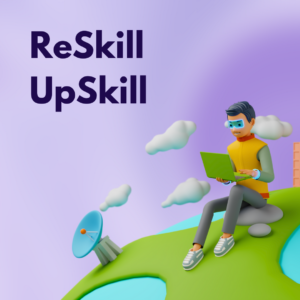The Positive Impact of AI on Employment: Why Humans Shouldn't Be Worried
The rapid advancement of AI technology has led to concerns regarding human job displacement. However, this white paper argues that humans should not be overly worried about this issue.
It highlights the potential for AI to create new job opportunities, facilitate reskilling, and enhance human productivity, ultimately fostering a more robust and dynamic workforce.
By examining historical evidence, analyzing the AI revolution’s unique characteristics, and drawing on expert opinions, this white paper aims to alleviate concerns about AI’s impact on jobs.
The rise of AI has sparked anxiety about the potential displacement of human jobs. While this concern is not unfounded, there are several reasons why humans should remain optimistic about the future of work, even as AI continues to progress.
Historical evidence of technological shifts
Throughout history, technological innovations have led to the creation of new industries and job opportunities.
Examples include
- the Industrial Revolution,
- the advent of the automobile, and
- the rise of the internet.
In each case, new jobs emerged as old ones became obsolete. AI is expected to follow a similar pattern, with new roles emerging to meet the demands of a changing workforce.
AI's unique characteristics
AI technology has the potential to augment human capabilities and complement workers in various industries. This symbiotic relationship will help create new job opportunities and enhance human productivity. For example, AI can automate mundane tasks, freeing up time for workers to focus on more creative and strategic aspects of their jobs.
Job creation in new and existing sectors
As AI continues to develop, new industries and job opportunities will arise. Examples include AI ethics and regulation, AI-powered healthcare, and AI-driven creative sectors. Furthermore, AI will generate a demand for human expertise to train, manage, and maintain these systems, creating new roles in AI development, data analysis, and cybersecurity.
Reskilling and upskilling the workforce
 With the increasing adoption of AI, focusing on reskilling and upskilling the workforce is crucial. Governments, businesses, and educational institutions should work together to provide resources and opportunities for individuals to acquire new skills and adapt to the changing job market.
With the increasing adoption of AI, focusing on reskilling and upskilling the workforce is crucial. Governments, businesses, and educational institutions should work together to provide resources and opportunities for individuals to acquire new skills and adapt to the changing job market.
This will help to minimize job displacement and maximize the potential benefits of AI integration in the workforce.
The human touch
There are specific jobs and industries where the human touch remains essential, such as customer service, education, mental health, and elderly care. AI can be used as a supportive tool in these sectors but needs to fully replace humans’ emotional intelligence, empathy, and interpersonal skills.
Conclusion
While AI’s rapid progression might raise concerns about job displacement, there are several reasons why humans should be reassured. It is essential to embrace the potential of AI to enhance human productivity and drive innovation rather than succumbing to fear and anxiety about the future of work.
By fostering a symbiotic relationship between AI and human workers, creating new job opportunities in various sectors, and focusing on reskilling and upskilling the workforce, the AI revolution can ultimately lead to a more robust and dynamic force.
“The human spirit to break barriers, ability to adapt, continuously learning and upskilling and growing will be the winner.”
Follow Notesday Academy
Topic Categories
Get the latest updates
Sign up for our most recent posts
Take out some time to read. No spam, we will email you when a new post is published.




